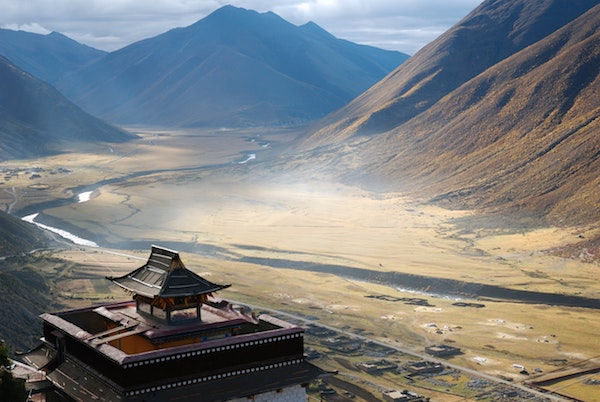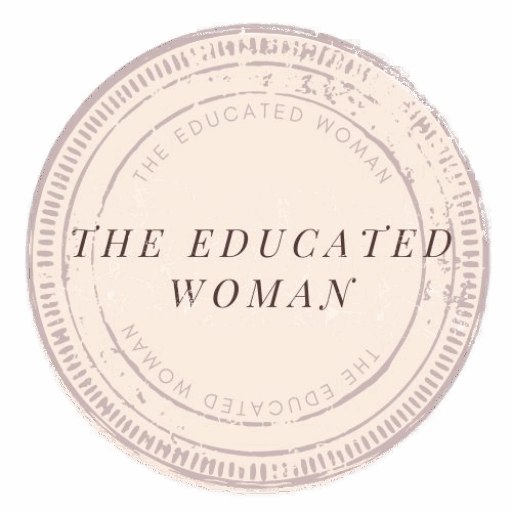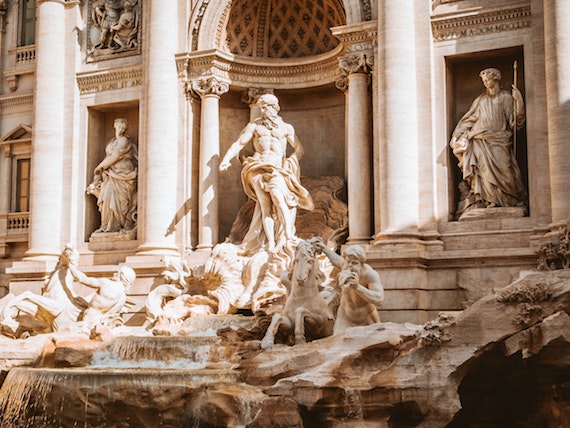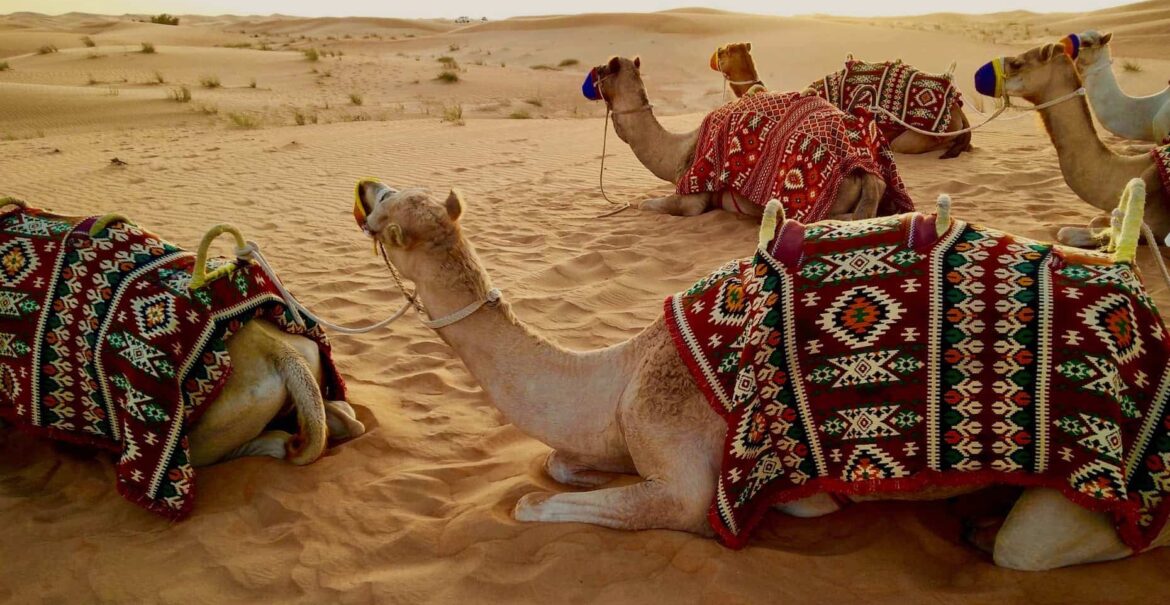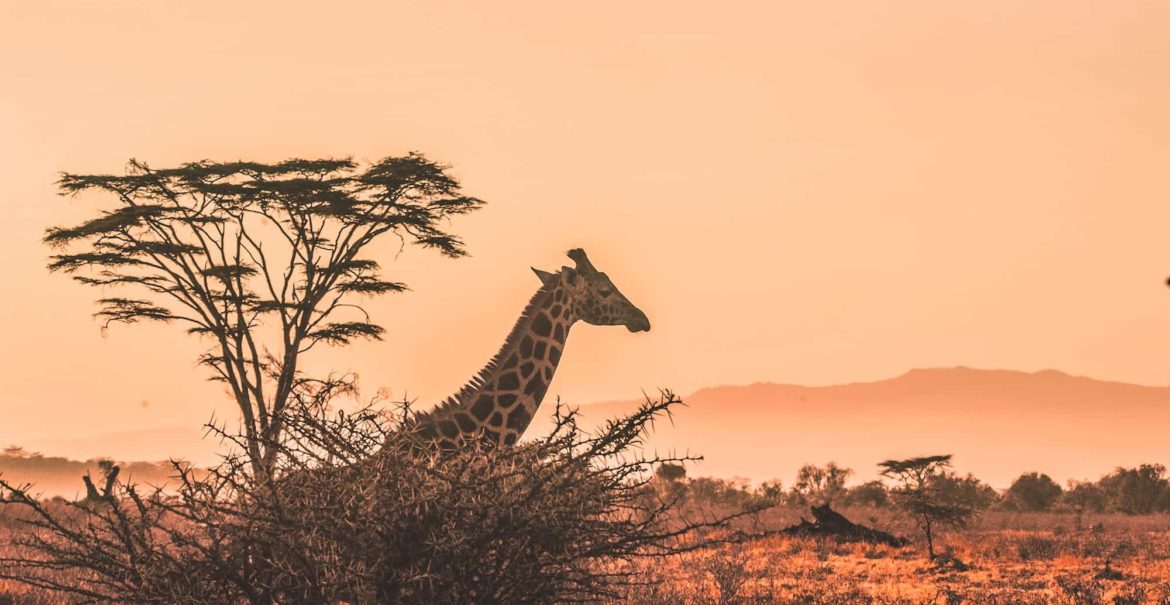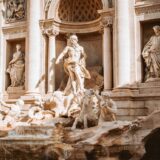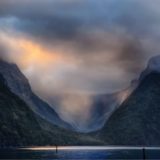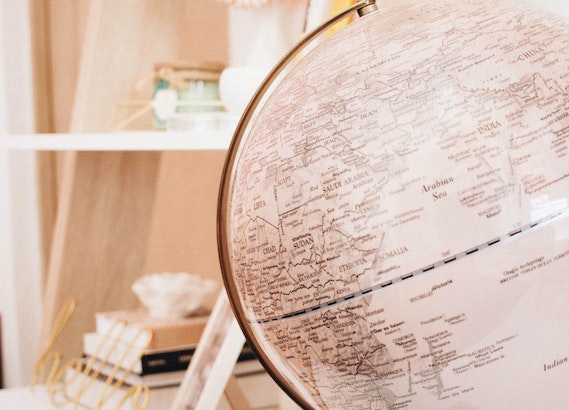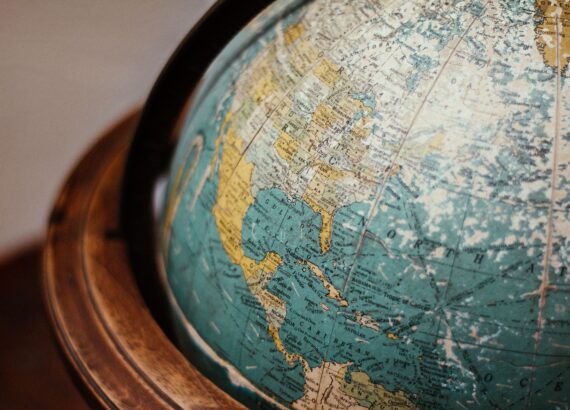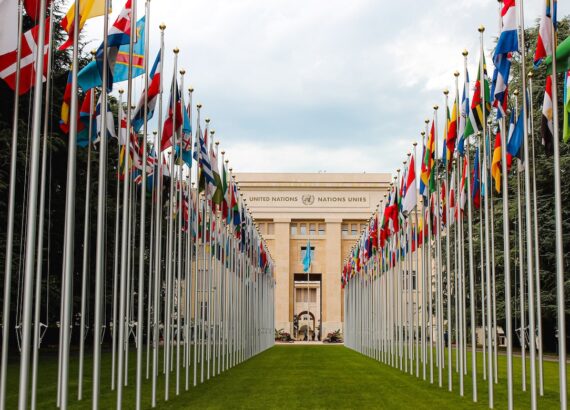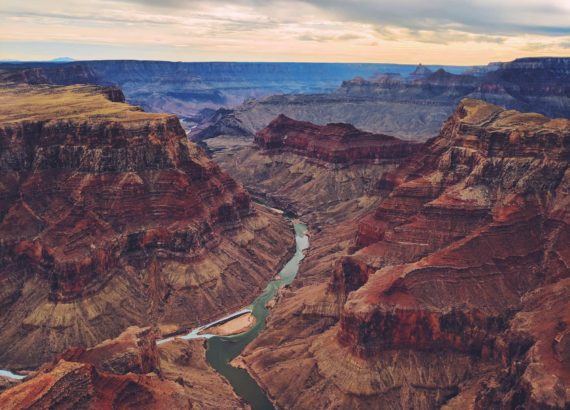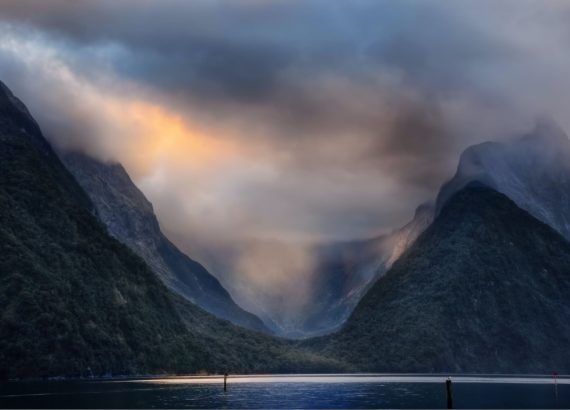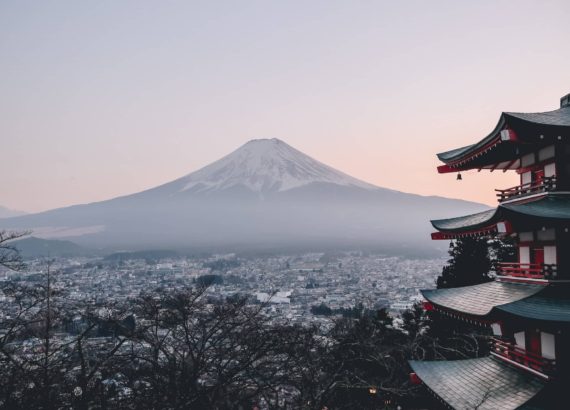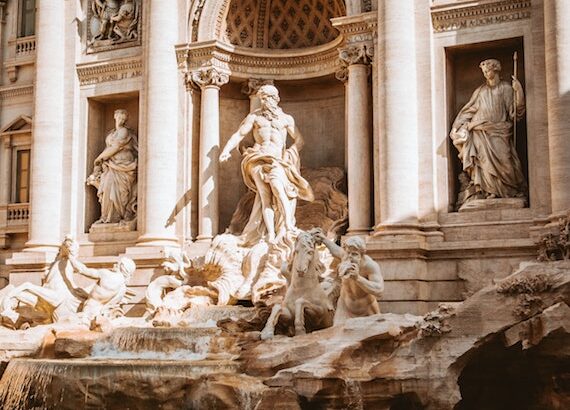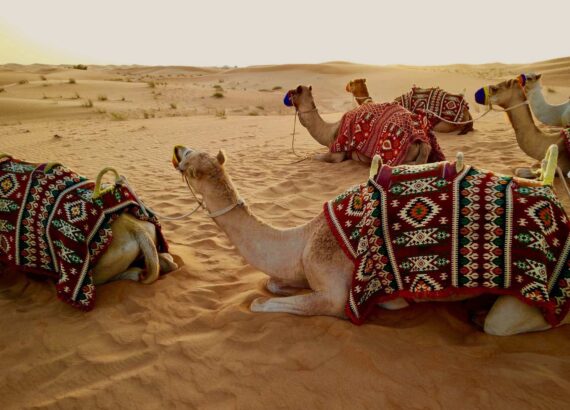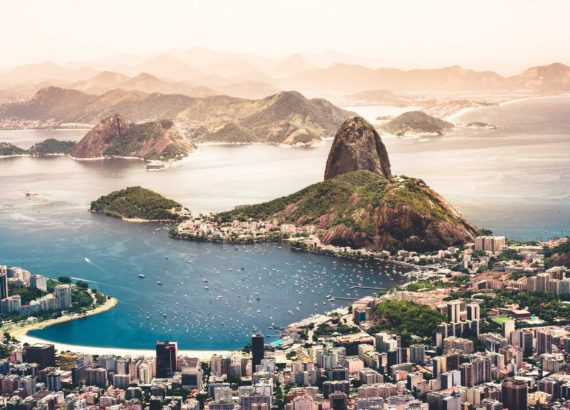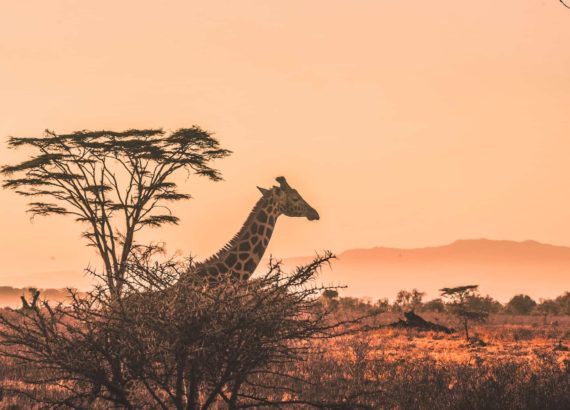ASIA
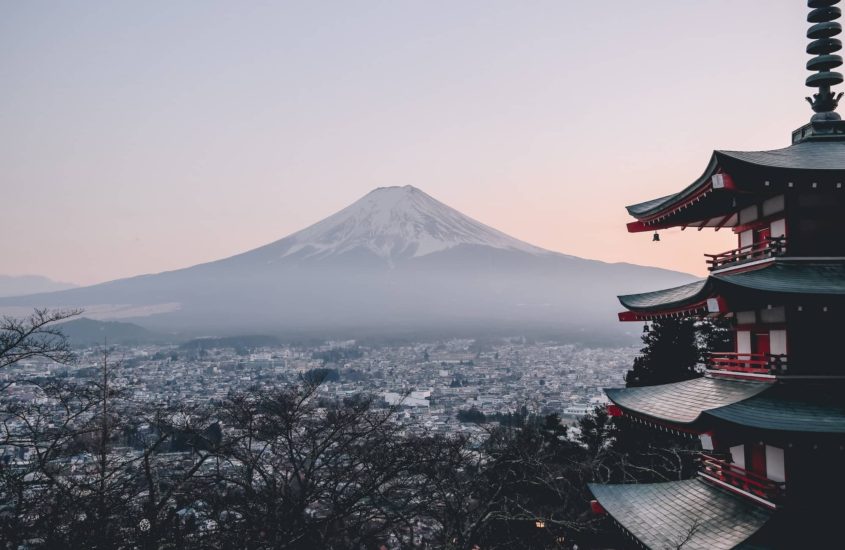
OVERVIEW
An area of dynamic growth and the world’s most populous continent, Asia includes the world’s second, third, and fifth largest economies (China, Japan, India).
Economic superpower China is the world’s largest manufacturing hub, the world’s largest exporter and trade partner, possesses the world’s largest military, and in recent decades has been investing heavily in overseas infrastructure which has increased its influence abroad.
Japan is a member of the G7 (group of the world’s wealthiest and most advanced nations); and the G20 (group of the world’s largest economies) includes Asian countries China, Japan, India, Indonesia, and South Korea.
Rapid economic growth in recent decades has drastically reduced the rate of poverty in several Asian countries, most notably in China, Vietnam, and Kyrgyzstan— which have effectively eradicated extreme poverty (defined as living on $1.90 or less per day). Indonesia, Pakistan, and India have also reduced poverty levels in recent decades.
However, poverty remains a significant issue in Asia, and the rapid growth of recent decades has worsened wealth inequality in many countries.
Rapid growth has also caused significant environmental damage, pollution, and greenhouse gas emissions.
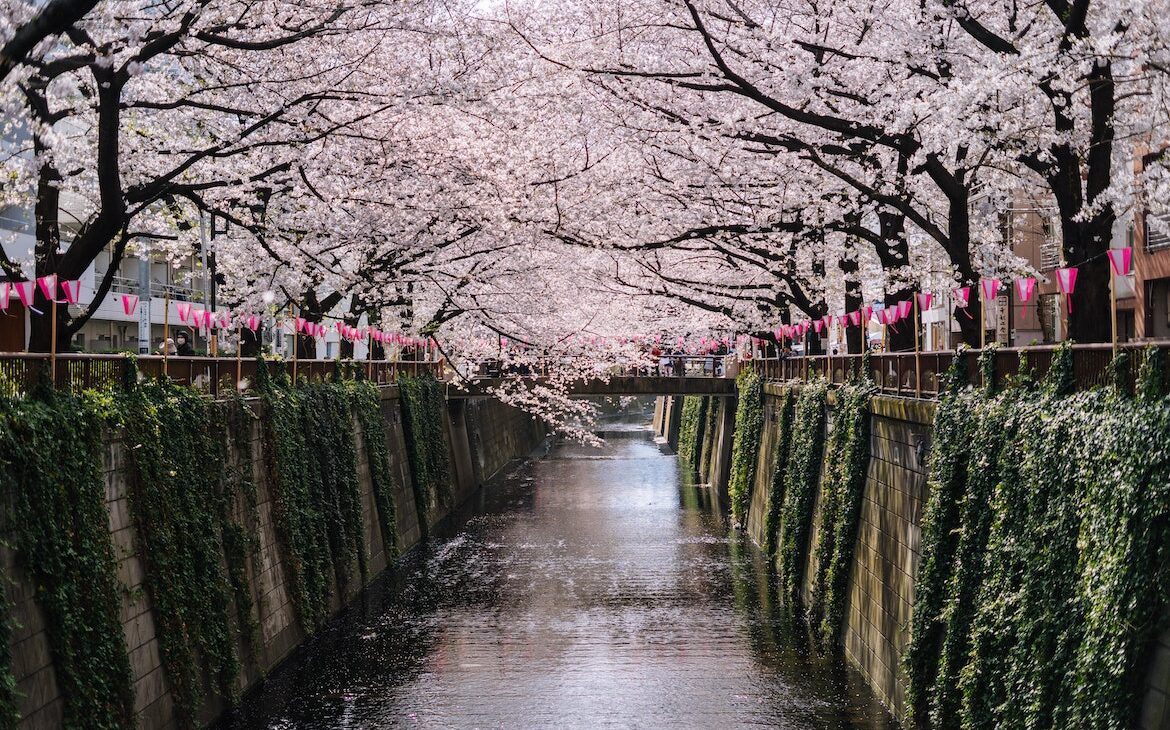
China is the world’s most populous country (c. 1 billion, 400 million), followed by India (c. 1 billion, 300 million.) Compare these numbers to the population of the US (c. 300 million) or the UK (c. 60 million.) By area, China is similar in size to the US, and is one of the largest countries in the world, possessing enormous natural resources including coal, minerals, and oil.
Asia has some of the most populous cities in the world, including Tokyo, Delhi, and Shanghai, and includes areas with some of the world’s highest population densities, (cities Dhaka, Mumbai, and Hong Kong) — as well as the lowest population densities (Mongolia and parts of Central Asia).
Some of the wealthiest places in Asia per capita are petroleum-rich Brunei, gambling center Macau (a Chinese territory) and financial hubs Singapore and Hong Kong. The poorest per capita are underdeveloped Nepal, totalitarian North Korea, and war-torn Afghanistan.
Four of the world’s five single-party Communist countries are in Asia: China, Vietnam, Laos, and North Korea (the fifth is Cuba).
China, North Korea, most Central Asian countries, and some Southeast Asian countries are considered “Not Free” per the Freedom House report on political and civil liberties, and corruption is high in parts of Central Asia and Southeast Asia, per Transparency International’s Corruption Perceptions Index.
Asia boasts feats of modern engineering including China’s massive Three Gorges Dam (the world’s largest hydroelectric power station, which supplies electricity to millions) and Japan’s high-speed train network, with bullet trains traveling at nearly 200 miles per hour.
In recent years, the major sites of conflict in Asia have included: territory disputes in the South China Sea and in the East China Sea; ongoing crisis in North Korea and in Afghanistan; ongoing conflict between India and Pakistan and Islamist militancy in Pakistan; military rule in Myanmar following a coup and ousting of the President in 2021, the Rohingya crisis in Myanmar, the Uighur crisis in Xinjiang, China; civil liberties abuses in Hong Kong; and tension between China and Taiwan. More details on these conflicts can be found below in the Region By Region section.
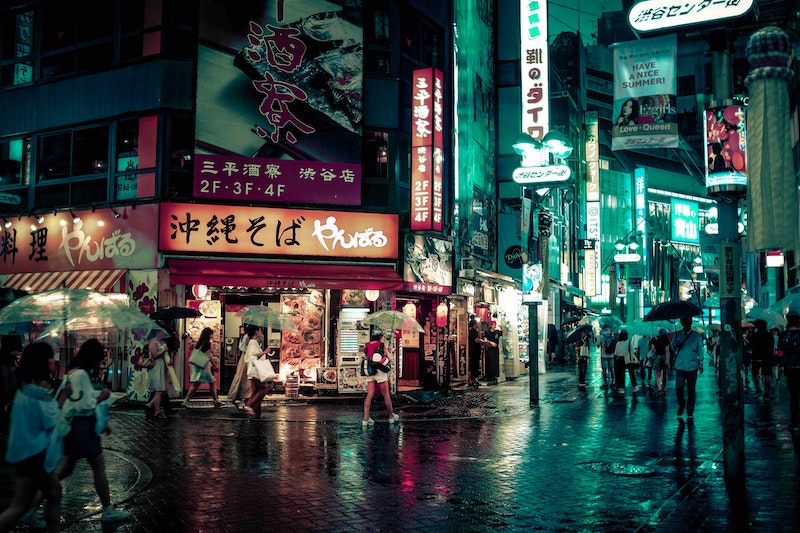
INTERNATIONAL ORGANIZATIONS
United Nations: The main centers of United Nations activity in Asia are in Bangkok, Thailand and Tokyo, Japan.
APEC (Asia Pacific Economic Cooperation) is an economic forum which supports sustainable economic growth and regional economic integration in the Asia-Pacific region, removing tariffs and other barriers to trade.
ASEAN (Association of Southeast Asian Nations) promotes economic and political cooperation in the southeast region. The AEC (ASEAN Economic Community) is a single market for the region, and AFTA is the ASEAN Free Trade Area.
EAS (East Asia Summit) is a forum for discussing security policy issues in the Indo-Pacific, and its members include the US, Russia, Australia and New Zealand in addition to China, Japan, India, and ASEAN countries.
The Asian Development Bank finances development projects in the Asia-Pacific region.
A BRIEF OVERVIEW OF RECENT HISTORY
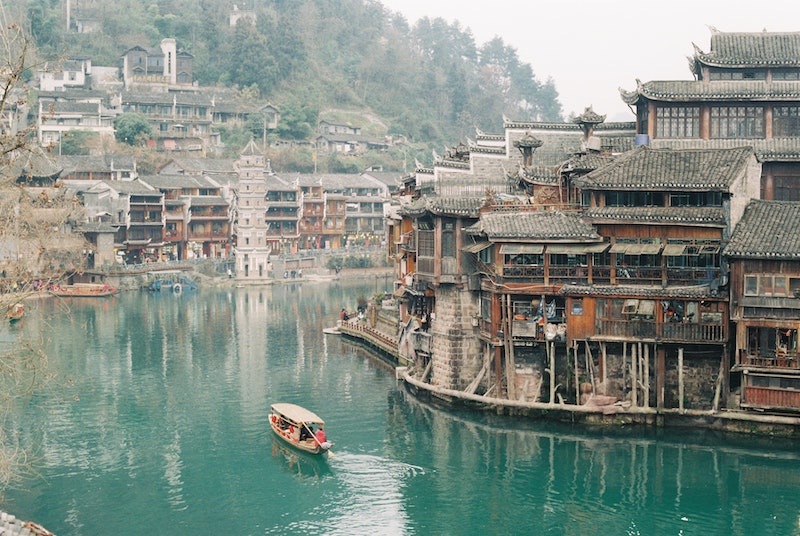
BEFORE WORLD WAR I
For most of the 19th century, Western powers dominated and exploited much of Asia. In South Asia, the UK had colonized the entire Indian subcontinent (which includes today’s India, Pakistan, Bangladesh, Myanmar) as well as Sri Lanka (then called Ceylon). Almost all of Southeast Asia was colonized by European powers (France, Netherlands, UK), and Central Asia was controlled by Russia. In a chapter of Chinese history referred to as the Century of Humiliation, China faced a series of defeats to Western powers (and later to Japan): in the mid-1800s, Britain defeated China in the two Opium Wars (waged over Britain’s damaging illegal opium trade, which had brought about debilitating opium addiction in China) and acquired Hong Kong and Kowloon. Anglo-French forces destroyed and looted the imperial Old Summer Palace; and China lost control of Vietnam to the French.
Then in the late 19th century, Imperial Japan, which earlier in the century had been bullied by Western powers— (in 1853, the militarily superior US mandated that the then-isolated nation open itself up for trade with foreign nations)— became itself a colonizing empire with an aggressive program of expansion, and invaded and took over Korea, Taiwan, and parts of mainland China in the years before World War I.
WORLD WAR I
During World War I, Japan allied with the Allies in order to continue its program of territorial expansion, acquiring German territories in the Pacific.
China supplied aid to the Allies.
India lent huge support to the UK’s war effort (including over one million soldiers) which would intensify their campaign for independence after the war.
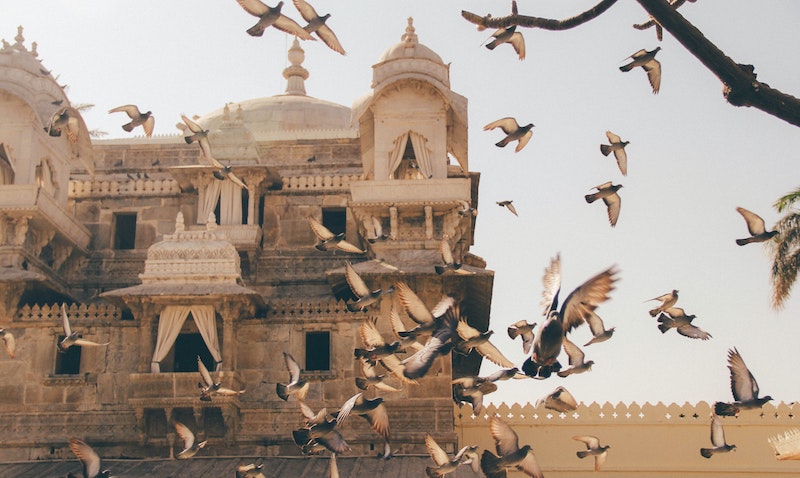
INTERWAR
The interwar period in India saw Mahatma Gandhi’s nonviolent resistance to British rule, including the 1930 Salt March, an act of civil disobedience in which thousands of Indians gathered salt in violation of a repressive British law.
China was in a state of political chaos called the Warlord Era, fractured into many military cliques. In 1927 Civil War began, between the Nationalists (Kuomintang) and the Communist Party of China.
In the Long March, the Communist Red Army retreated thousands of miles over the course of a year and relocated the Communist base, in the process gaining followers all across China and marking Mao Zedong as the leader of the Communists.
In the 1930s, Japan continued its campaign of expansion, pushing into mainland China and inflicting horrific violence in the Rape of Nanjing in 1937. This invasion forced the Chinese Nationalist and Communist factions to join forces.
WORLD WAR II
During World War II, Japan, allied with Axis powers Germany and Italy, invaded and occupied much of Southeast Asia, including Cambodia, Thailand, Philippines, Indonesia, Malaysia, Singapore, and Myanmar.
Japan also continued its campaign in China. Estimates on the Chinese casualties of World War II vary widely, but generally range from 8 million up to as high as 20 million people, largely civilians, killed by the Japanese.
In 1941, Japan attacked the US Navy base at Pearl Harbor, killing over 2,000 Americans and destroying numerous battleships, and drawing the US into the war.
Japan continued gaining ground in Southeast Asia and the Pacific until the turning point naval Battle of the Midway in 1942, a US victory.
In 1945, the US dropped atomic bombs on Hiroshima and Nagasaki, killing an estimated 100,000-200,000 people, and forcing Japan’s surrender.
After the war, the US occupied Japan for seven years and oversaw their demilitarization and institution of a new constitution, which paved the way for the country’s “economic miracle” recovery over the next decades.
Oversight of Korea was split between the Allied powers US (South Korea) and the USSR (North Korea) — which led to the Korean War in 1950.
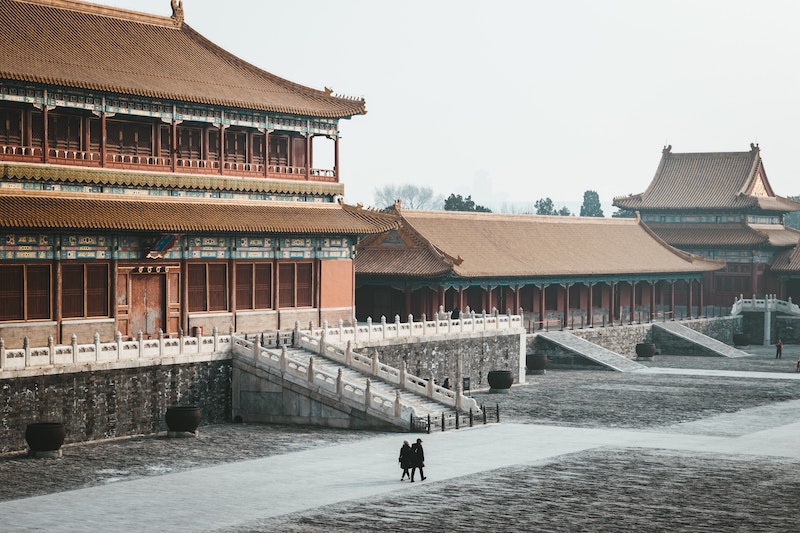
COMMUNISM IN CHINA
After World War II, Civil War in China resumed between the Soviet-backed Communists and the Nationalists. In 1948, the Nationalists fled to Taiwan, establishing what is today the Republic of China; and mainland China became the Communist People’s Republic of China, under the control of the much-venerated Chairman Mao Zedong. Inspired by Stalin’s Five-Year Plans in Soviet Russia, Mao began in 1958 the Great Leap Forward, a campaign of land reorganization and agriculture quotas which, like Stalin’s Five Year Plans, caused mass starvation. The Great Leap Forward resulted in the death of 11 million people in China.
In 1966, in an effort to revitalize the mission of the Party, Mao began the Cultural Revolution, a chaotic reign of terror in which the “Four Olds” were discarded (Old Ideas, Old Culture, Old Habits, Old Customs) and new ideals embraced; during this time the young Red Guards (student-led paramilitary movement) destroyed art and literature of previous generations, and dissidents were executed.
DECOLONIZATION
Desire for independence in India (which again lent heavy support to the British war effort) reached a breaking point during World War II, and the UK agreed to its independence following the war.
In the 1947 Partition of India, India was granted independence, and the new states of Pakistan and East Pakistan (now Bangladesh) were created as a new home for India’s Muslim minority. The Partition caused a mass migration and much bloodshed between Hindus and Muslims, and triggered a series of Indo-Pakistani Wars over the next decades. Disputes between India and Pakistan dating back to the Partition persist today.
Between 1945 and 1957, Southeast Asian countries gained independence from colonial powers.
Following the First Indochina War between France and Indochina (French colony which then comprised Vietnam, Cambodia, and Laos) from 1946-1954, Vietnam was divided into the Communist North and the non-Communist South, and Cambodia and Laos were made independent states. This set the stage for the later Vietnam War and the rise of the Khmer Rouge in Cambodia.
KOREAN WAR
After World War II, the control of Korea was divided between the USSR-controlled North and the US-controlled South. In 1950, the North Koreans, with support from the USSR, invaded South Korea to try to unite all of Korea under one Communist regime. The US entered the war and successfully drove the North Korean army back over the border, then continued north to the Chinese border; this drew in the Chinese army, who then pushed the line of skirmish back to the original north-south divide, which is now the DMZ (demilitarized zone) separating North Korea and South Korea.
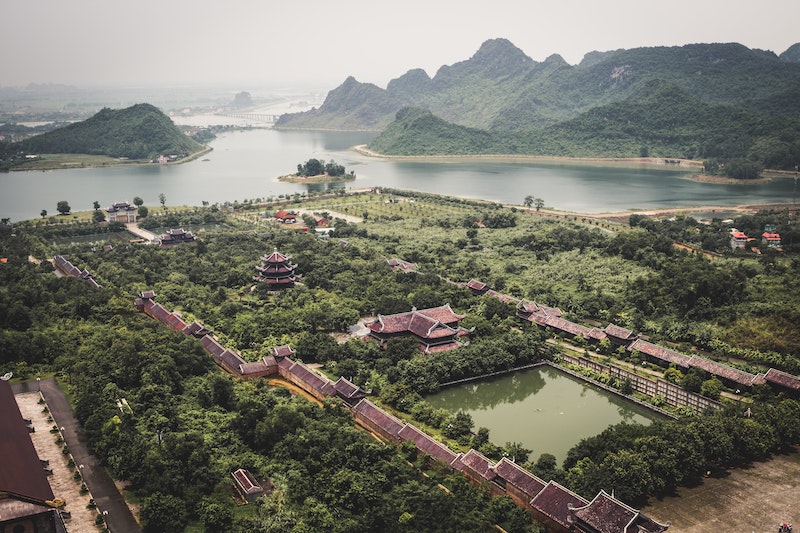
VIETNAM WAR
Civil war erupted in 1960 when the Communist Viet Cong insurrection movement began in South Vietnam, and North Vietnam attempted to unite the country under Communist leadership. Driven by the fear of Communism spreading through Southeast Asia (“domino theory”), the US began sending advisors into Vietnam in the early 1960s to try to maintain a non-communist South Vietnam, and in 1965 went to war against both the North Vietnam and the insurrectionist Viet Cong in South Vietnam.
The US pulled out in 1975, defeated, and North Vietnam successfully united all of Vietnam under Communist rule. Laos, and Cambodia also became Communist states, setting the stage for the horrors of the Khmer Rouge and the Killing Fields in Cambodia.
THE KILLING FIELDS
From 1975 to 1979, the Communist Khmer Rouge, led by dictator Pol Pot, took over control of Cambodia in a military coup after civil war, and went on a campaign of brutal restructuring and genocide, resulting in the death of over one million Cambodians.
SOVIET INVASION OF AFGHANISTAN
In 1979 the Soviet Union invaded Afghanistan in order to support the Communist government against the US-supported insurgent mujahideen movement— an act of aggression which ended the period of Cold War detente (easing of tensions) between the US and USSR. The Soviet-Afghan War lasted until 1989, leaving the country in a civil war which set the stage for the takeover by the Taliban, an Islamist nationalist group, in the 1990s.
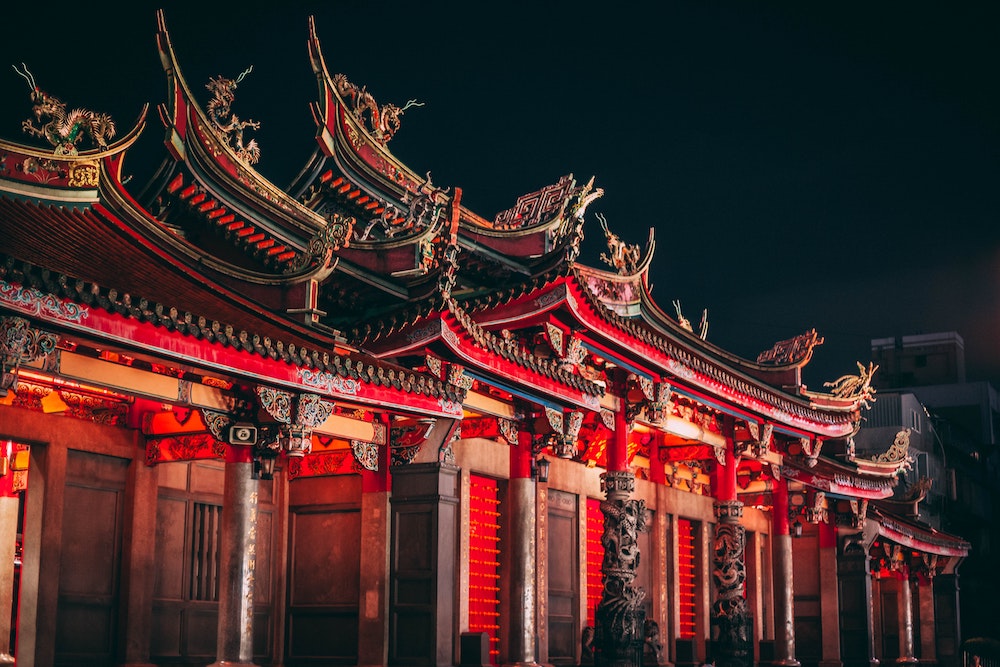
ASIAN ECONOMIC MIRACLE
Asia experienced great economic growth during the second half of the 20th century.
The “Four Tigers” – Hong Kong, South Korea, Singapore, and Taiwan – experienced phenomenal economic growth in the years between 1960 – 1990.
In the late 1970s, China reformed its economy under President Deng Xiaoping and opened up the country to global markets, and since then has been one of the world’s fastest growing economies, has lifted hundreds of millions of Chinese people out of poverty, and has become the world’s leading manufacturer.
During the 1980s, Japan experienced an economic boom. They then experienced an economic collapse in the 1990s, the “Lost Decade”, caused by a real estate bubble.
The Asian Financial Crisis of 1997-1998 began in Thailand and affected East and Southeast Asia and involved currency devaluations and stock market collapses. The crisis most affected Indonesia, Thailand, Malaysia, South Korea, and the Philippines.
TIANENMEN SQUARE
In 1989, hundreds or thousands (estimates vary widely) of peaceful pro-Democracy student protesters were killed by the Chinese government, a violent crackdown which the Chinese government still refuses to acknowledge today.
WAR IN AFGHANISTAN
The US invaded Afghanistan in 2001 following the 9/11 terrorist attacks, in order to drive out the Taliban (oppressive regime in power since the 1990s) which had provided a safe haven for terrorist group al-Qaeda and its leader Osama bin Laden. The US-led coalition toppled the Taliban quickly, but in the years since, the Taliban has increasingly regained control of parts of the country.
2004 TSUNAMI
The 2004 Indian Ocean tsunami – the deadliest in recorded history— killed over 200,000 people across 14 countries, especially affecting India, Thailand, Indonesia, Sri Lanka, and the Maldives.
REGION BY REGION
Asian countries can be divided into four regions: East Asia, South Asia, Southeast Asia, and Central Asia.
(NOTE: Countries in West Asia are covered in the Middle East post; and Russia, which spans the Eurasian continent, is covered in the Europe post.)
CENTRAL ASIA
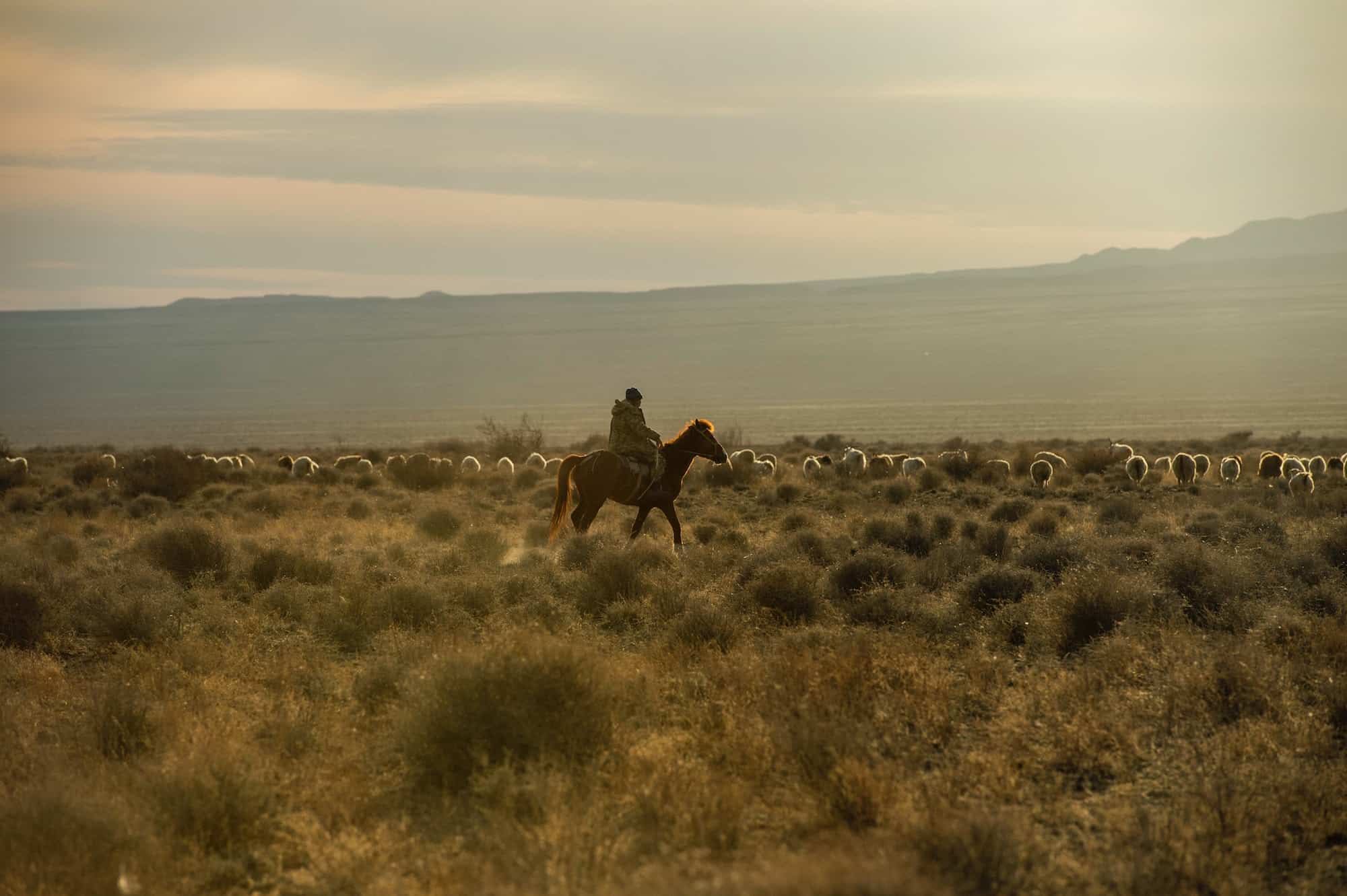
KHAZAKHSTAN
UZBEKISTAN
TURKMENISTAN
KYRGYZSTAN
TAJIKISTAN
These countries are sparsely populated, and the main religion is Islam, predominantly Sunni.
Central Asia was conquered by the Russians in the 19th century, and in the 20th century these countries were republics of the Soviet Union. Russian language and culture has maintained influence in the region.
Central Asian countries rank poorly in Freedom House’s report on political and civil liberties, with all but Kyrgyzstan listed as “Not Free”. Elections in this region are not fair, and corruption is high. 2020 saw large-scale protests in Kyrgyzstan against unfair parliamentary elections.
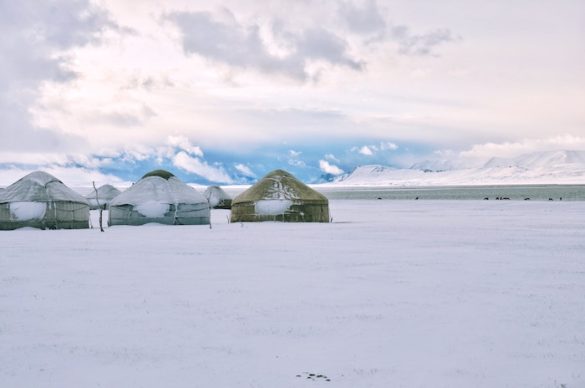
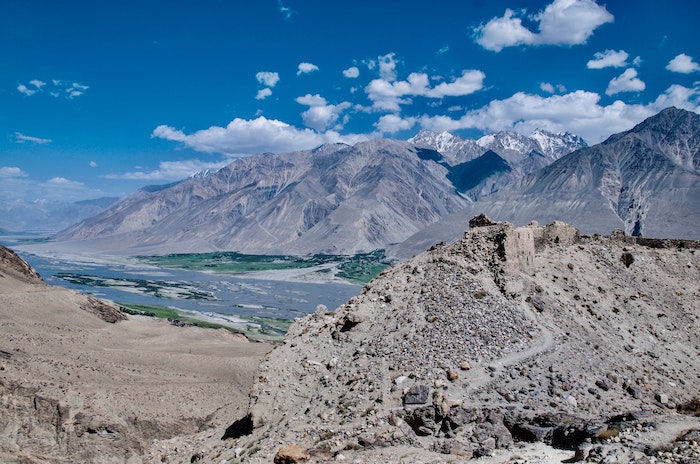
SOUTH ASIA
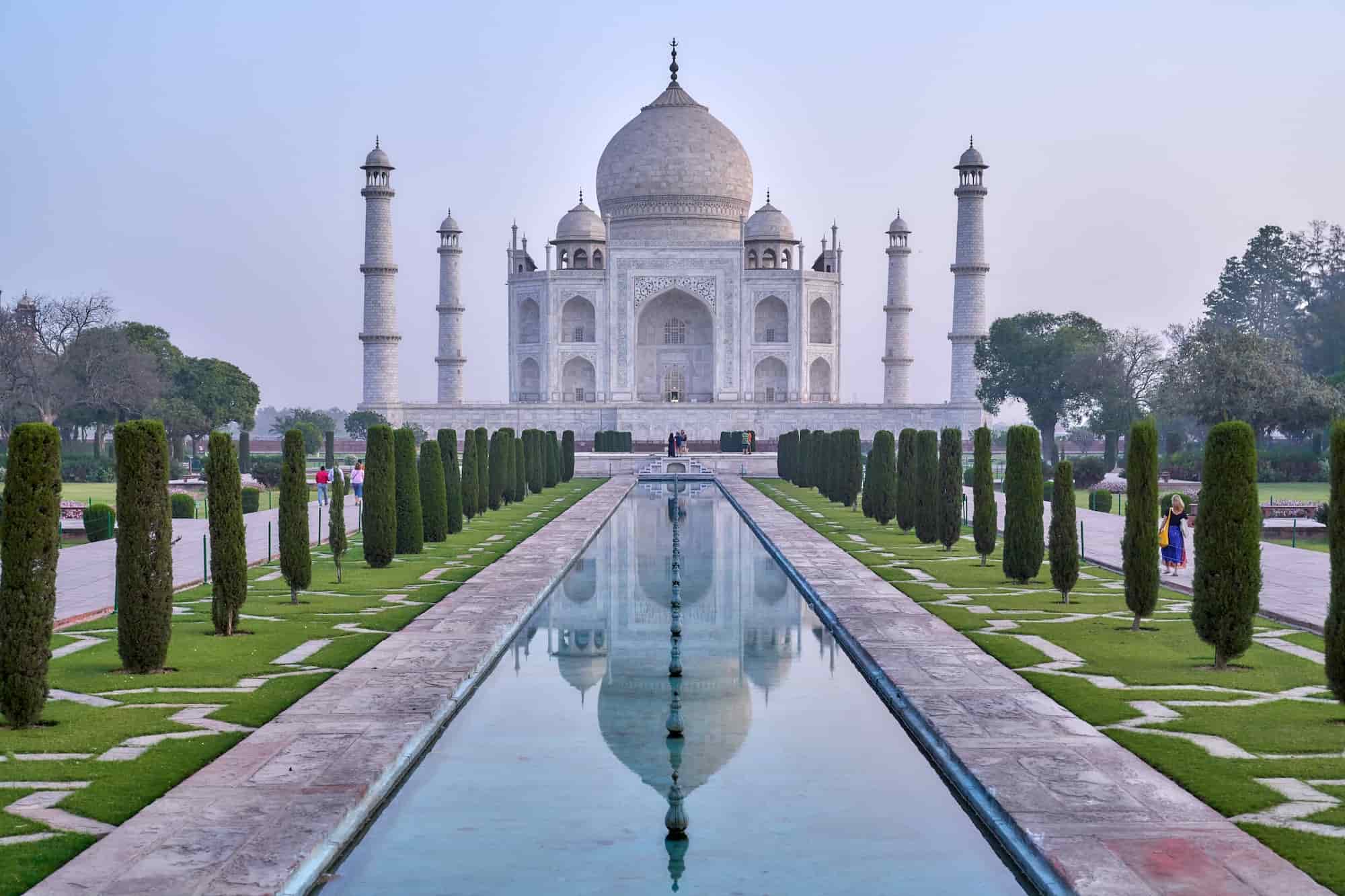
SOUTHERN COUNTRIES
AFGHANISTAN
PAKISTAN
INDIA
SRI LANKA
BANGLADESH
MALDIVES
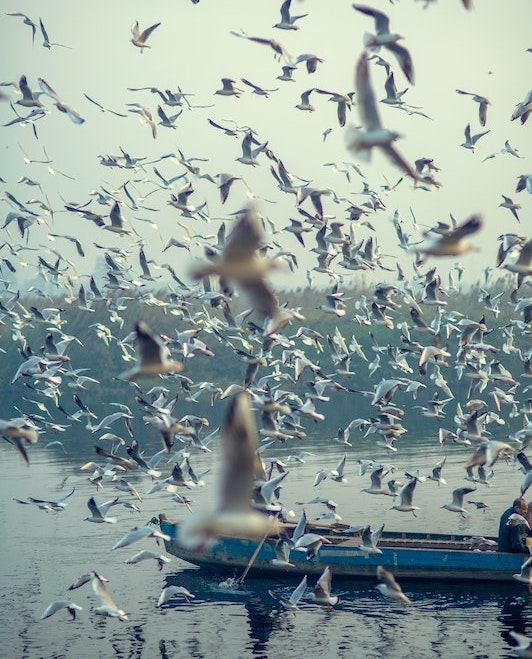
AFGHANISTAN
Afghanistan has been reclaimed by the Taliban following the withdrawal of US troops in 2021, leaving the country in a humanitarian crisis. An unstable country for many years, Afghanistan has been listed in the top ten Fragile States (in the Fund for Peace’s index) in recent years and retains high levels of corruption, low adult literacy, and violations against the rights of women.
The US invaded Afghanistan in 2001 following the September 11th terrorist attacks, in order to drive out the Taliban (oppressive Islamist regime in power since the 1990s) which had provided a safe haven for terrorist group al-Qaeda and its leader Osama bin Laden. The US-led coalition toppled the Taliban quickly, but in the years since, the Taliban increasingly regained control of parts of the country.
Previously a British colony, Afghanistan gained independence from Britain in 1919. It was invaded and occupied by the Soviet Union from 1979-1989. The Taliban seized control in 1996 and implemented an oppressive regime, particularly towards women.
Afghanistan is also the world’s largest supplier of opiuim (used to make heroin) from opium poppy cultivation.
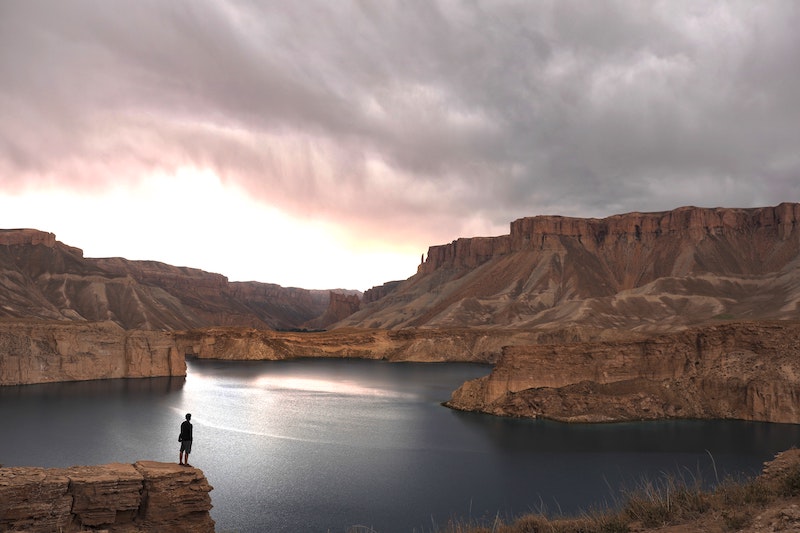
PAKISTAN
Pakistan is the fifth most populous country in the world and has the second highest Muslim population in the world (following Indonesia).
Benazir Bhutto was the first female Prime Minister of Pakistan (1993-1996), and the first woman to head a democratic government in a Muslim majority country. She was assassinated in 2007 by al-Qaeda or the Taliban.
Malala Yousafzai, a Pakistani activist, who as a teenager was shot by the Taliban for publicly campaigning for education for girls, is now a Nobel Peace Prize laureate and continues to advocate for education around the world.
Pakistan is under threat from factions of terrorist groups TTP and the Islamic State; global financial watchdog FAFT (Financial Action Task Force) has placed it on the “grey list” for not doing enough to curb terror financing. There have been several deadly terrorist attacks in recent years, including the worst in the country’s history in 2014 which killed almost 150 people.
INDIA
India, famously diverse, is the second most populous country in the world (population 1 billion 360 million), the world’s largest democracy, and has one of the world’s largest economies. It is one of the world’s nine nuclear powers.
PARTITION OF INDIA AND WAR BETWEEN INDIA AND PAKISTAN
A British-controlled territory since the 18th century, India sought independence in the Indian Mutiny of 1857, then again in the early 20th century including the nonviolent passive-resistance campaigns led by Mahatma Gandhi following World War I (in which India made huge contributions to the British cause), and during World War II in the Quit India movement. Independence was achieved in 1947, along with the creation of the new state of Pakistan and East Pakistan (now Bangladesh) as a new home for India’s Muslim minority. This Partition caused a mass migration of Muslims into Pakistan and Hindus out of Pakistan, and much bloodshed between the groups. Conflict in the region of Kashmir also began during this process; although the region was predominantly Muslim, its Hindu leader initially refused to join either India or Pakistan, leading the two countries to fight for control in the first Indo-Pakistani War. Three wars have now been fought over Kashmir, and the region is still contested although a ceasefire was achieved in 2021.
Tensions between India and Pakistan raise concern of military engagement between the two nuclear powers. Despite having a significantly smaller economy than India’s, Pakistan has a comparable nuclear arsenal.

KASHMIR CONFLICT
This decades-long territorial dispute over the Kashmir region saw its deadliest violence in years when in 2019 with air strikes and aerial engagement. A ceasefire was reached in 2021.
TENSION BETWEEN INDIA AND CHINA
Tensions run high between India and China over a disputed border in the Kashmir region, and 2020 and 2021 saw open conflicts at the border. The two countries fought a war in 1962 over another border dispute in the Sino-Indian War.
BANGLADESH
A mostly Muslim country, Bangladesh was formerly part of India, then East Pakistan, then fought for independence from Pakistan in 1971.
In the 2013 Rana Plaza disaster, a garment factory providing for major US and European brands collapsed, killing and injuring thousands of people. The tragedy turned global attention to the systemic problems of the fashion industry regarding factory working conditions.
In recent years Bangladesh has experienced a humanitarian crisis due to the ethnic cleansing of the Rohingya people in neighboring Myanmar; close to one million Rohingya refugees moved to refugee camps in Bangladesh.
SRI LANKA
Sri Lanka, British colony (then called Ceylon) until 1948, is a Buddhist-majority country.
The country was in civil war from 1983- 2009, with insurgencies by the Tamil Tigers of the persecuted minority Tamil ethnic group against the Sinhalese majority government.
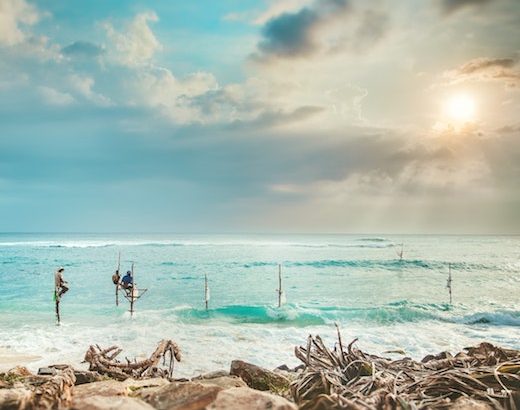
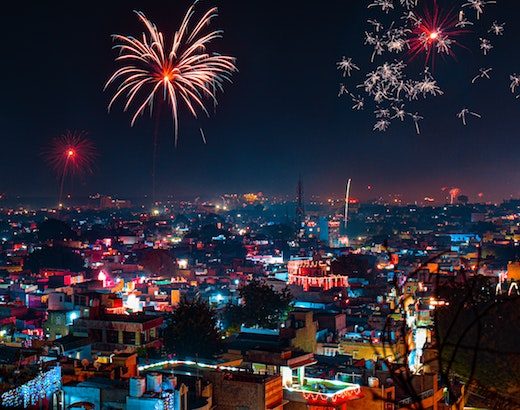
HIMALAYAS
NEPAL
BHUTAN
The Himalaya mountains span Pakistan, China, India, Nepal, and Bhutan; Mount Everest is in Nepal and K2 (second highest mountain in the world) is in Pakistan.
Non-industrialized and with low literacy, Nepal is one of the poorest countries in Asia. It is the home of Mount Everest.
Bhutan is one of the only carbon-negative countries in the world (it takes more greenhouse gas than it emits).
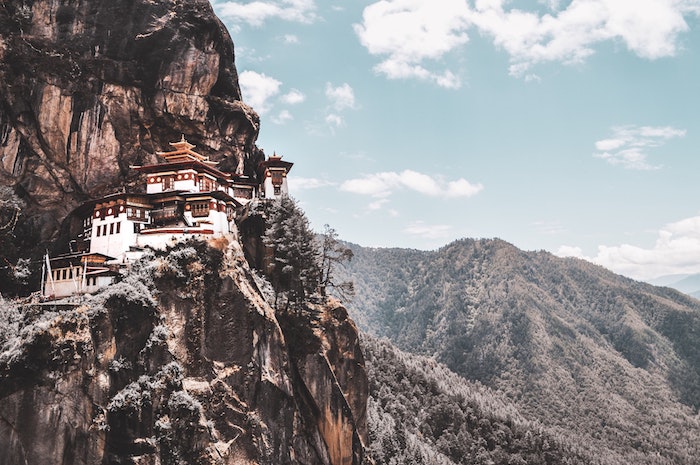
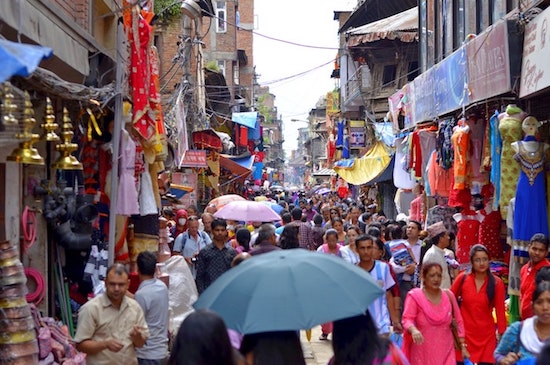
SOUTHEAST ASIA

MAINLAND
MYANMAR
THAILAND
CAMBODIA
LAOS
VIETNAM
With the exception of Thailand which remained independent, all of Southeast Asia was colonized by European powers by the 19th century. The French controlled Vietnam and Indochina (today Laos and Cambodia); the British controlled Burma (today called Myanmar), Singapore, and parts of Malaysia; the Dutch controlled what is now Indonesia; and the Philippines were controlled by Spain (and later the US). The countries gained their independence in the years following World War II.
Laos, Vietnam, Cambodia, and Myanmar are ranked as Not Free in Freedom House’s report on political and civil liberties; and corruption is high in many Southeast Asian countries per Transparency International’s Corruption Perceptions Index. Laos and Vietnam are among the world’s five remaining Communist nations (along with China, North Korea, and Cuba.)
Buddhism (which originated in India in 5th century BCE) is the main religion in mainland Southeast Asia, while Islam is the main religion in Malaysia and Indonesia.
Laos was bombed extensively during the Vietnam War.
Destruction of rainforests in Southeast Asia is a major environmental concern.
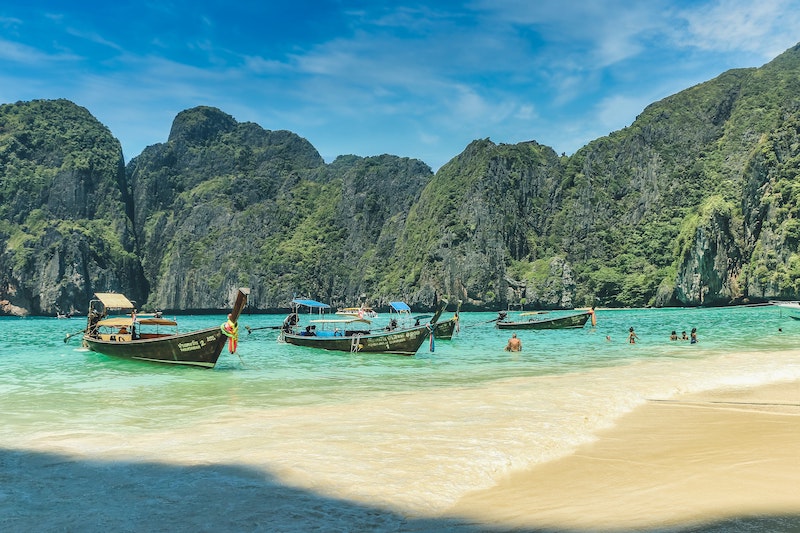
Tourist hot-spot Thailand (formerly Siam) has the second largest economy in Southeast Asia, after Indonesia.
CRISIS IN MYANMAR
Myanmar has been under military rule since early 2021 when a coup ousted and jailed President Aung San Suu Kyi. Resistance against the new regime has resulted in a violent crackdown on civilians.
The ethnic cleansing of the Muslim minority Rohingya people in Myanmar has resulted in over 700,000 refugees fleeing to Bangladesh since 2017.
Under British rule until 1948, Myanmar was called Burma until the military government changed it in 1989. Note that the US government still officially calls the country Burma.
THE KILLING FIELDS
Over one million Cambodians were killed in the Killing Fields during the reign of terror of the Khmer Rouge, a Chinese-backed Communist regime, from 1975 to 1979. The Khmer Rouge, led by dictator Pol Pot, took over control of Cambodia in a military coup after civil war, and went on a campaign of brutal restructuring and genocide (targeting especially the educated class in pursuit of creating an agrarian socialist society) until the Vietnam Army invaded and deposed the regime in 1978.
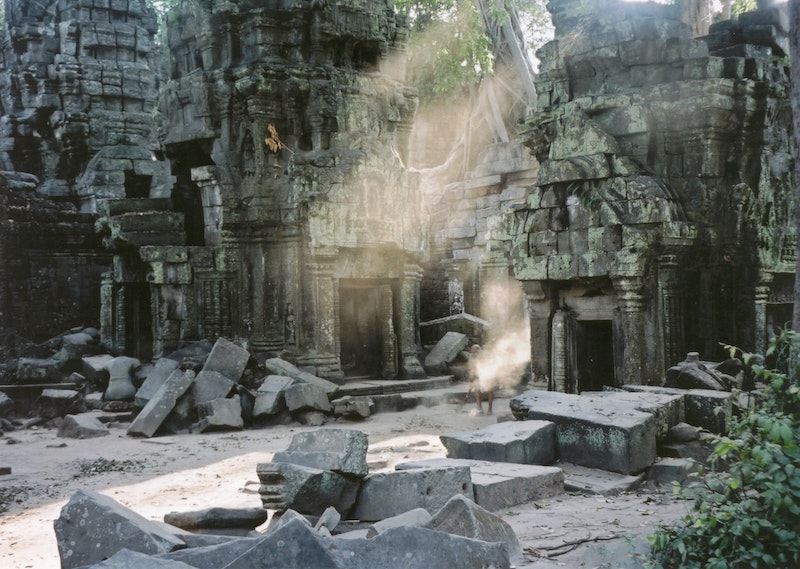
VIETNAM WAR
Immediately following World War II, Vietnam — at that time part of the French colony Indochina, which also included Cambodia and Laos— declared independence, and fought the French under the leadership of revolutionary Ho Chi Minh and the guerrilla Communist organization Viet Minh in the First Indochina War. The conflict drew in the anti-Communist US and UK on the side of the French, and Communist China on the side of the Viet Minh. The Viet Minh were victorious, and in 1954 Vietnam was separated into the Communist North and the non-Communist South; and Cambodia and Laos were made independent states. The US began to support the non-Communist regime in the South, under dictator Ngo Diem, while a Communist insurrection began in the South, setting the stage for the Second Indochina War, or the Vietnam War.
Civil war erupted in 1960 when the Communist Viet Cong insurrection movement began in South Vietnam, and North Vietnam attempted to unite the country under Communist leadership. Driven by the fear of Communism spreading through Southeast Asia (“domino theory”), the US began sending advisors into Vietnam in the early 1960s to try to maintain a non-communist South Vietnam.
In 1964, the Gulf of Tonkin Incident— in which, purportedly, North Vietnamese patrol boats attacked the battleship USS Maddox off the coast of Vietnam— gave the US a reason to officially engage in war with North Vietnam. This incident is now believed to be partly or totally fabricated.
The US sent troops to Vietnam, in a war against both the North Vietnam and the insurrectionist Viet Cong in South Vietnam.
The Viet Cong’s Tet Offensive in 1968— a highly coordinated attack throughout South Vietnam— revealed to the American public that a US victory was not close at hand, as the government had portrayed, and was a turning point for US popular support of the war. Support for the war was further eroded by documentation of the horrific My Lai massacre of 1968, in which US soldiers killed hundreds of civilians in the My Lai village. Finally, the publishing of the Pentagon Papers in 1971 — confidential high-level correspondences about the war— revealed to the American public that the US government had purposefully misled the public about the progress of the Vietnam War for years.
With no popular support for the war, the US pulled out in 1975, defeated, and North Vietnam successfully united all of Vietnam under Communist rule.


MARITIME
MALAYSIA
SINGAPORE
INDONESIA
PHILIPPINES
BRUNEI
TIMOR LESTE
The spice trade was central in the Southeast Asian Maritime countries. Much of this area was colonized by the British and the Dutch.

MALAYSIA
Known for its financial hub capital Kuala Lumpur, Malaysia is rich in natural resources including rainforest, petroleum, and gas. The country has territory on mainland Southeast Asia as well as on the island of Borneo in Maritime Southeast Asia.
Two Malaysian Airlines flights were struck by tragic circumstances in 2014: Flight 370 disappeared over the South China Sea for unknown reasons, and Flight 17 was struck down by a missile over Ukraine in the War in Donbass.
INDONESIA
Famously diverse, former Dutch colony Indonesia’s large population (270 million) is spread over thousands of islands, with most inhabitants living on Java and Sumatra. The country has the world’s largest Muslim population.
Indonesia has a high ranking economy, is a top producer of tree crops like rubber and coffee, and is a member of the G20.
In the 1960s, military leader General Suharto executed the brutal purge of suspected Communists, massacring hundreds of thousands. The US backed his dictatorship until his resignation in 1998 following the Asian financial crisis.
BRUNEI
A former British colony, oil-rich Brunei is one of the wealthiest countries in Asia by GDP per capita (PPP) and is an absolute Islamic monarchy, similar to Saudi Arabia.
SINGAPORE
City-state Singapore is one of the wealthiest countries in Asia, by GDP per capita (i.e. standard of living.) English is widely spoken in Singapore.
PHILIPPINES
Comprising thousands of islands and possessing abundant natural resources, the Philippines struggle with high levels of income inequality and poverty.
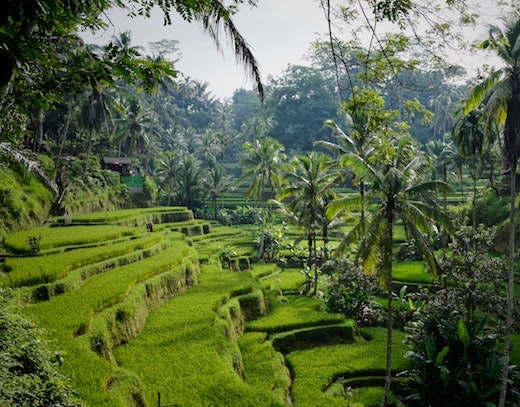
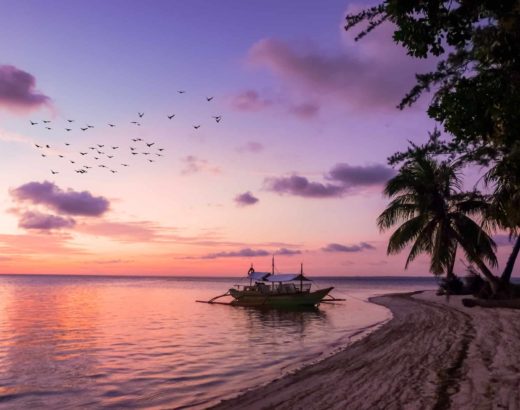
EAST ASIA
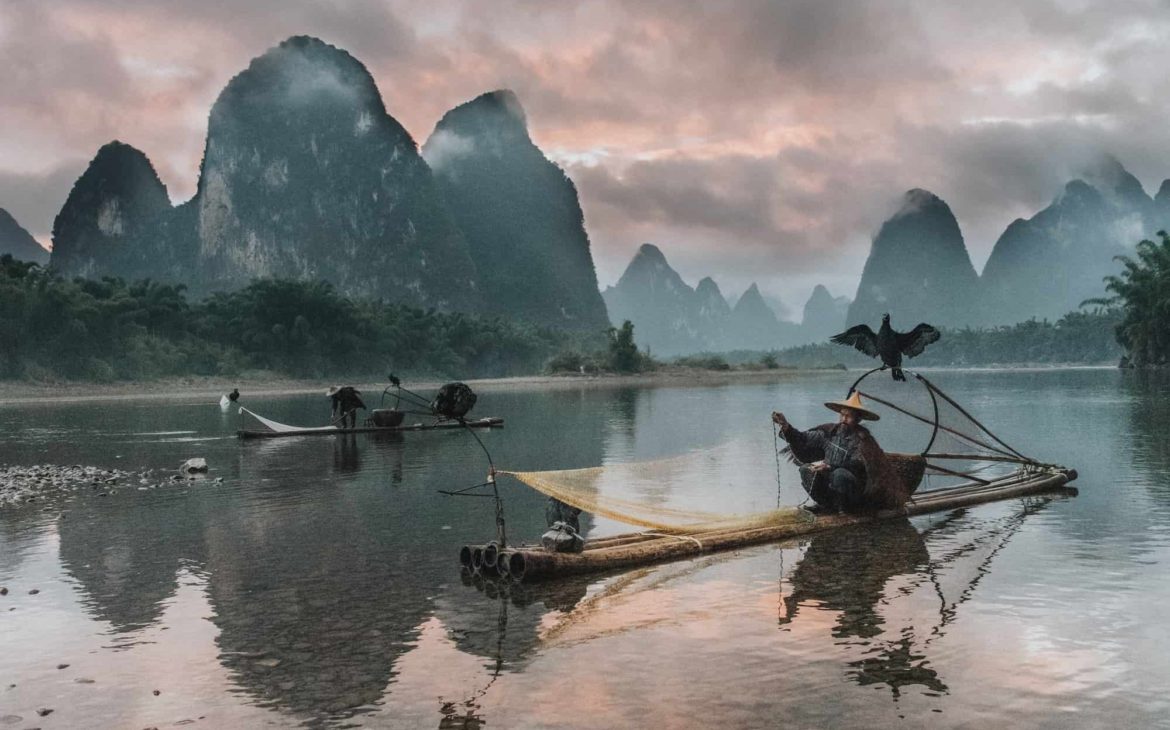
CHINA
TAIWAN
JAPAN
NORTH KOREA
SOUTH KOREA
MONGOLIA

CHINA
China has the largest population in the world at 1 billion, 400 million, possesses the largest standing army in the world, and is a superpower second only to the US in economy and global influence. It is one of the world’s five remaining Communist countries (along with Laos, Vietnam, North Korea, and Cuba). Single-party communism (with repressive, totalitarian roots) is still in place in the Chinese political and social system, although economically the country has veered far towards capitalism since the 1970s. The government owns all of the land in China, while individuals may own property and real estate. The CCP’s (Chinese Communist Party) aims are guarded by the PLA, the People’s Liberation Army.
In the era of current President Xi Jinping, in power since 2012, under the ideology and policies of “Xi Jinping Thought”, China has initiated the massive Belt and Road Initiative —an ambitious development and infrastructure project spanning from East Asia to Europe, also referred to as the New Silk Road— as well as the militarization of the South China Sea, and the growth of the so-called “Great Firewall of China”— internet regulation via legislative and technological censorship which blocks sites including Google, Youtube, and Facebook.
UIGHUR MINORITY IN CHINA
China has been accused of committing crimes against humanity against the Uighar Muslim minority in the Xinjiang region. One million Uighars have been detained in “re-education camps”.
SOUTH CHINA SEA
China claims ownership over most of the resource-rich and strategically important South China Sea, despite the UN’s determination that it the sea is legally shared by the EEZ (exclusive economic zone) of countries of Southeast Asia and Taiwan, plus free international waters. China has been building up and militarizing islands in the region in recent years, and ran naval exercises there in 2018. In response, the US has increased its military and naval presence in the region.
EAST CHINA SEA
Another territory dispute, this conflict concerns resource-rich islands in the overlapping EEZ regions of China and Japan.
TAIWAN
Formerly a Japanese colony, Taiwan became the new seat of the Republic of China government during the Communist Revolution in 1949, when the ousted non-Communist government led by Chiang Kai-Shek and over a million of his followers relocated to the island to escape the new Communist regime. Taiwan considers itself to be the true China, whereas the People’s Republic of China (mainland China) considers Taiwan to be a rebellious province, and bars countries from having official diplomatic relations with both the PRC and Taiwan in the one-China policy. The US has official relations with China, and unofficial relations with Taiwan due to this policy.
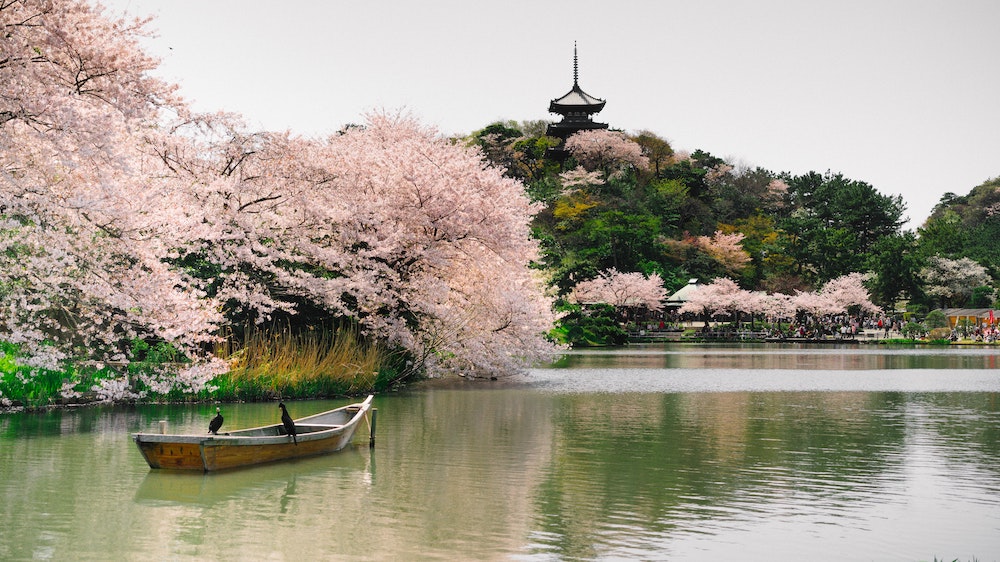
JAPAN
Japan has one of the world’s largest economies, is a top producer of cars, electronic equipment, and steel, and is a member of the G7. It is a major aid donor, a world leader in innovation and natural sciences, and a partner of the International Space Station.
In 2011, an earthquake and tsunami caused the Fukushima nuclear disaster, the most severe nuclear accident since Chernobyl.
SOUTH KOREA
A poor, agricultural country until the 1960s, South Korea is now one of the world’s largest economies, a member of the G20, and a world producer of steel, cars, and electronics.
South Korean diplomat Ban Ki Moon served as Secretary-General of the UN from 2007-2016.
NORTH KOREA
An isolated, oppressive totalitarian dictatorship, North Korea (the Democratic People’s Republic of Korea) has the lowest GDP per capita (an indication of standard of living) in Asia; its inhabitants have almost no political rights and civil liberties (per Freedom House), and human rights violations are widespread. It is estimated that around a hundred thousand political prisoners are being held in secret prison camps. The country has one of the largest militaries in the world, and continues its program of nuclear weapon development (of unknown scale) in violation of UN Security Council resolutions, running frequent nuclear weapons tests and ICMB (intercontinental ballistic missile) tests in recent years.
When the two Koreas were separated along the 38th parallel (roughly what is now the Demilitarized Zone) at the end of World War II, Soviet-controlled North Korea became a Communist dictatorship, with the idolized Kim Il-Sung at the helm. Kim’s son, Kim Jong-Il, ruled from 1994, and in 2011 was succeeded by his son Kim Jong-un, the current Supreme Leader of North Korea. In recent years, Kim Jong-un met with South Korean President Moon Jae-in and with President Donald Trump about denuclearization, but made no sign of progressing in that direction.
KOREAN WAR
Korea was under oppressive rule by Japan from 1910 until the end of World War II. With Japan’s defeat, the country was divided into Soviet-controlled Communist North Korea and American-controlled South Korea. In the Korean War (1950-1953), North Korea invaded South Korea in an attempt to reunify the two regions under one Communist rule. The US and UN coalition waged the 3 year Korean War against North Korea and China to reclaim South Korea. When US-led forces pushed into North Korea near the Chinese border, China entered the conflict on the side of North Korea, and the war ended with a ceasefire and stalemate. No peace treaty was ever signed, so technically the war has never ended.
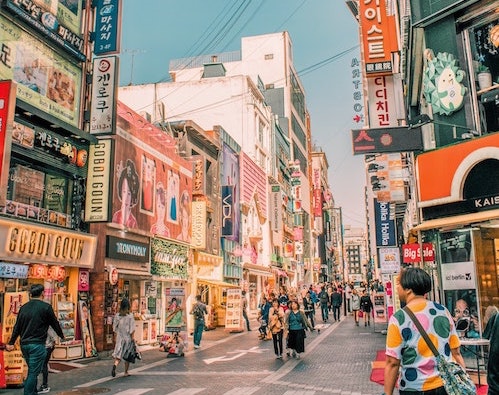
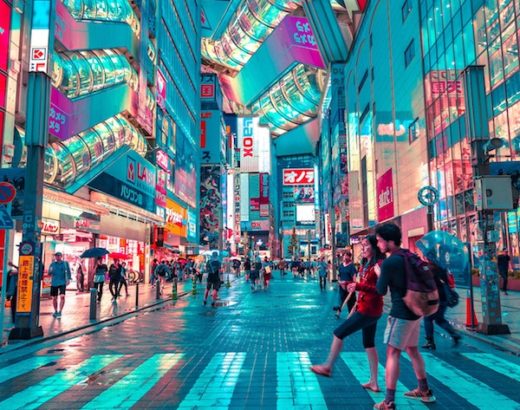
TERRITORIES & DEPENDENCIES
TIBET
HONG KONG
MACAU
Tibet has been officially recognized as an administrative region of China since 1950, but the Tibetan people claim to be an occupied country with a government in exile, led by the Dalai Lama, and accuse China of numerous human rights violations including political and religious repression.
Hong Kong, once a small fishing village, was seized by the British in 1841 (after defeating China in the First Opium War) and was rapidly built up, with a dense population today of over 7 million. It is the third biggest financial center after New York and London, and ranks, along with Singapore, as one of the world’s most expensive places to live. Although referred to as a city, the Hong Kong Special Administrative Region spans several islands as well as part of southeast mainland China.
Under Margaret Thatcher in the 1980s, the UK ceded control over Hong Kong to the People’s Republic of China, in an agreement which stipulated the transfer of power would take place from 1997 to 2047— a fifty year period to assimilate capitalist Hong Kong to the Communist China under the policy“one country two systems”- during which period Hong Kong would maintain its currency, market economy, and constitution. However, China has begun to curtail the rights and freedoms of Hong Kong by passing a National Security Law and proposing an Extradition law, which led to large-scale protesting.
